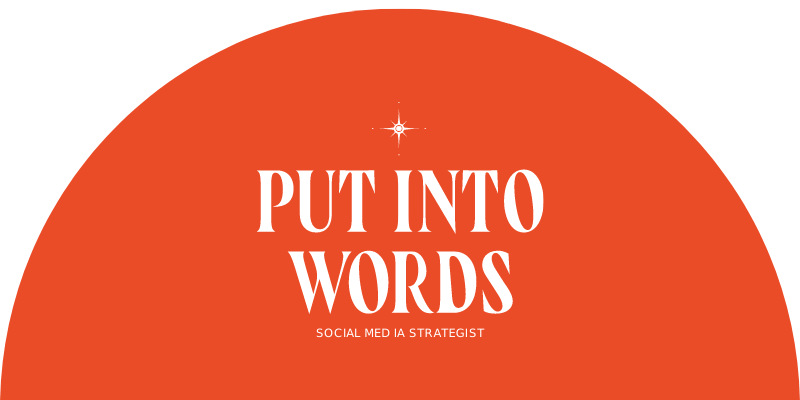Put Into Words
Q3 Keywords Vs
Hashtags Case Study

Client Bio/Insight:
@put_into_words has joined Kirst from @lemonadecollective.co and Katie from @thehive.socialmedia for joint case studies on keyword lists vs. hashtags at the end of captions. With all three accounts of our accounts aiming to elevate our industry on data-based strategies, this was the perfect opportunity to gather an extensive data set to test reach for client content

The Case Details:
Challenge/Problem
As Social Media Managers, we collectively aim to create copy that helps businesses meet our client’s Key Progress Indicators (KPIs). One such KPI is brand awareness with the reach metric to get their message out into the world. One of the ways we traditionally achieve this goal requires us to create a hashtag list within captions to reach a new audience based on location, industry, and post-specific topics. However, we noticed the latest trend where accounts forgo the long hashtag list, favoring a keyword list. We wanted to test the format vs. the hashtag list we have been using in the past to make sure we are maximizing our client’s reach in the present.
See the screenshots below for a visual of traditional hashtags vs. a keyword list.
Traditional hashtags Keyword list
Social Media Goals

How we reached the goal/Strategy
The Results
Before: All three of us had a combined overall reach of = 11,154 (Lauren = 1,969)
After: All three of us had a combined overall reach of = 15245 (an 4,091 increase).
Lauren @put_into_words_ Screenshots
Kirst @lemonadecollective.co Screenshots
Katie @thehive.socialmedia Screenshots
Before: All three of us had a combined NON-FOLLOWER Reach (broken down by post format of 12578. (Lauren 1,541)
After: All three of us had a combined NON-FOLLOWER Reach (broken down by post format of 13459. (Lauren 3,672)
Lauren@put_into_words_screenshots
Kirst @lemonadecollective.co Screenshots
Katie @thehive.socialmedia Screenshots
Overall conclusions from the group
Let’s take a look at Lauren’s data. While she had an overall increase in reach to non-followers, her post reach declined by (440), and her story reach declined by (10%). A viral reel is the explanation for her reach increase. There was no considerable boost in reach driven by the keyword list in post captions.
Let’s take a look at Kirst’s data. Kirst had a similar situation where 2 of her reels performed better than the previous month. However, her post reach was down, especially to non-followers.
Now, let’s take a look at Katie’s data. Katie’s reach dropped by almost 40%, and she notes, “I started using keywords in my strategy during July. And I noticed an increase overall in my impressions and reach for that month. I was changing things up, changing keywords, changing the format, etc., when we started our research in August, I was copying and “pasting the same set of keywords into every one of my posts with not as much variation.” This indicates that it is important to incorporate keywords that are content specific, not just use a copy and paste approach to a keyword strategy. Furthermore incorporating keywords in caption itself vs including them in list form at the bottom is potentially a more effective way to incorporate organic keywords.
With all of our reach down across the board, keyword lists do not cause an increase in reach to non-followers consistently. We used a base set of keywords and only added post-specific keywords to keep as many of the variables the same as possible. However, from Katie’s data, this shows a negative effect. The subsequent logical case study would be another month with keywords rotating or back to good old-fashioned hashtags.
A special thanks to Kirst and Katie! Make sure to follow them on Instagram for valuable social media management and strategy content.

